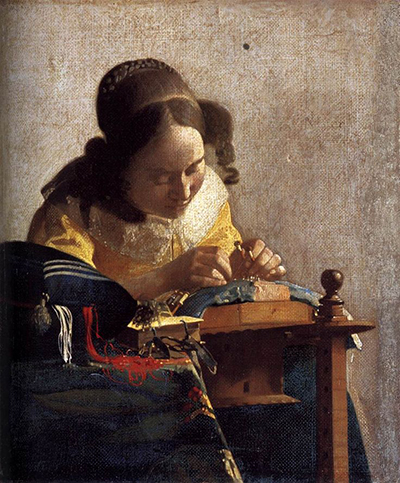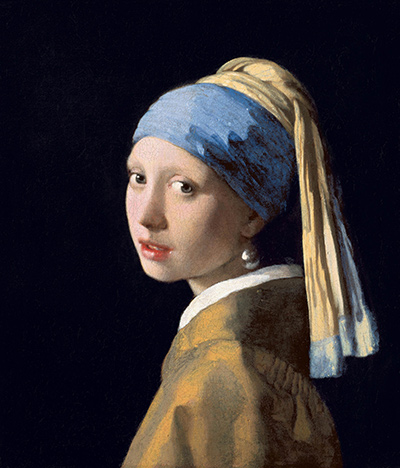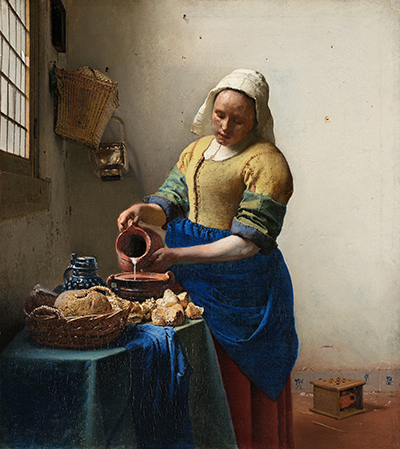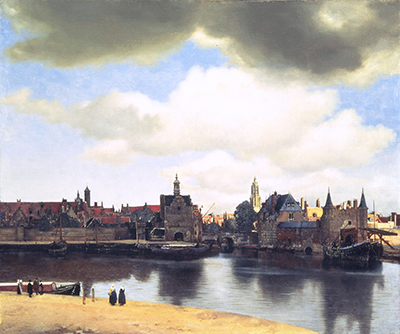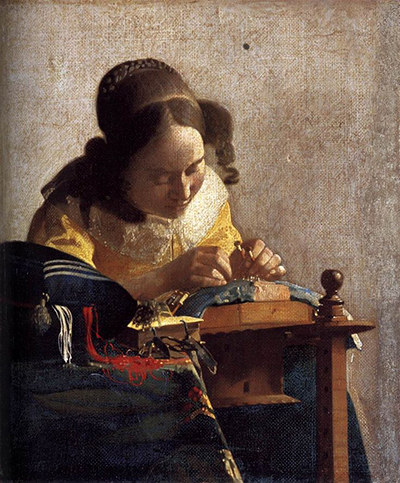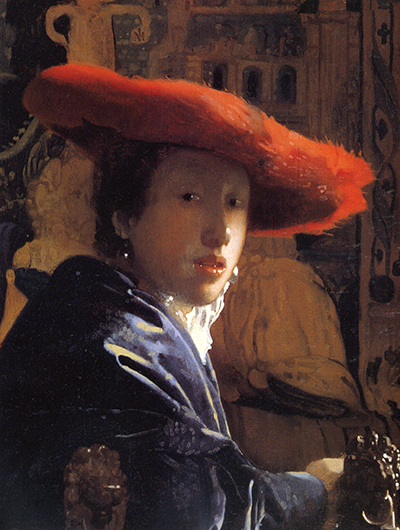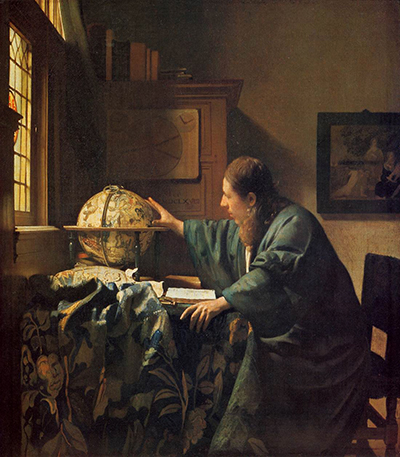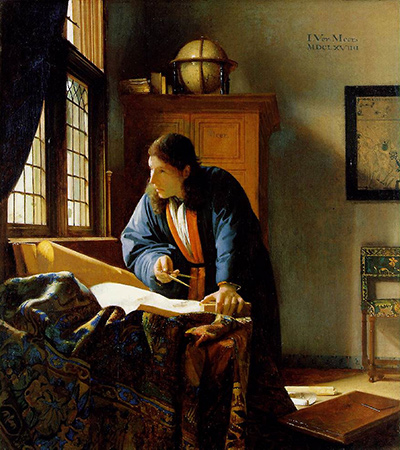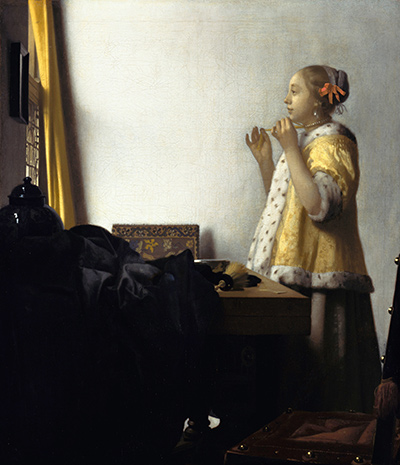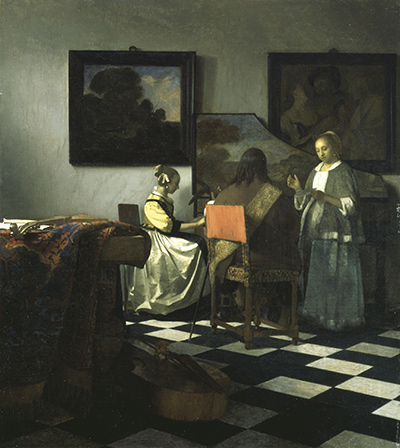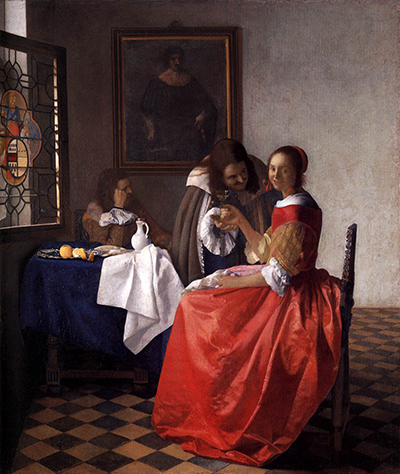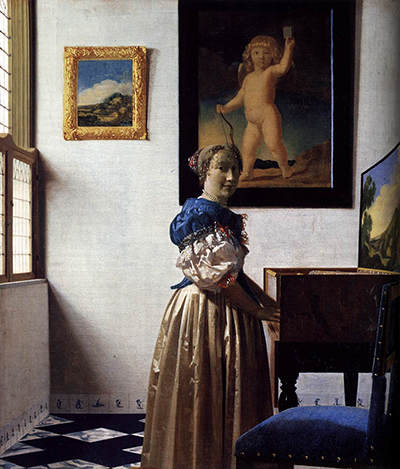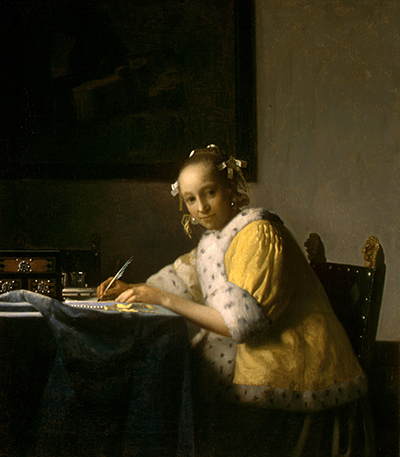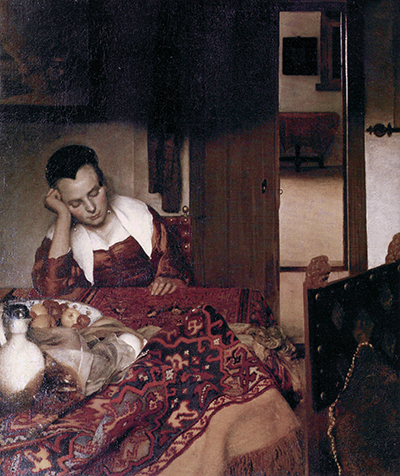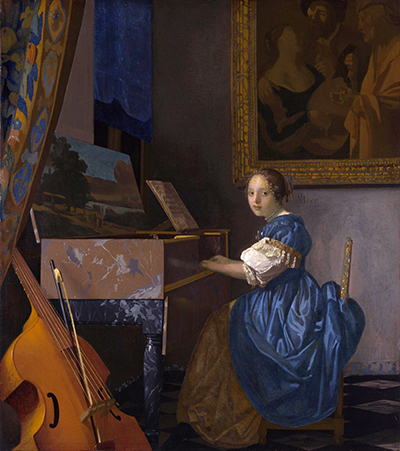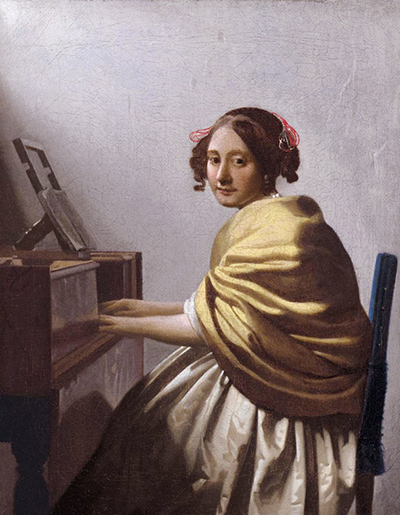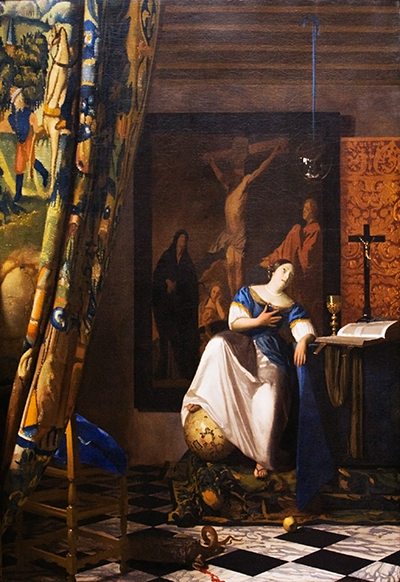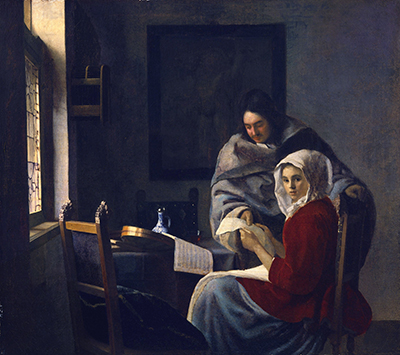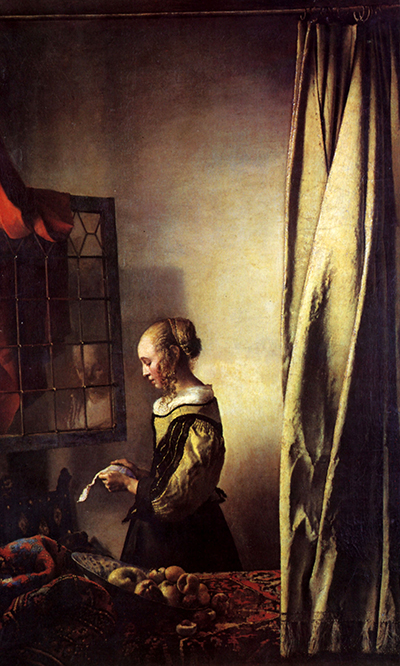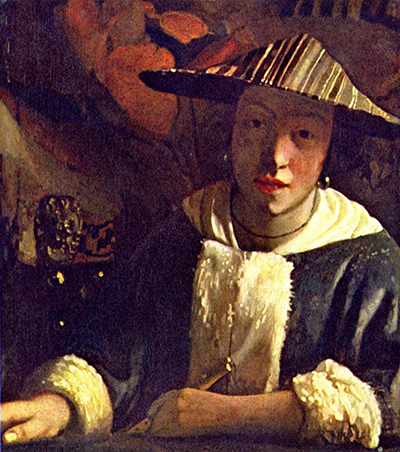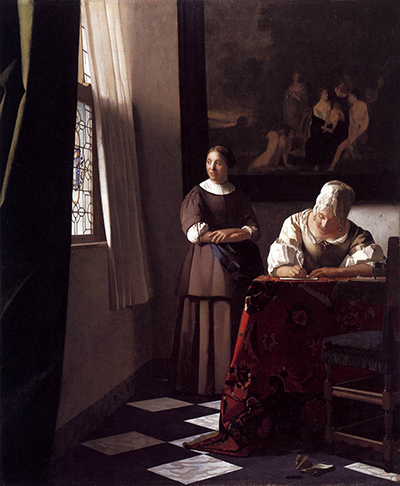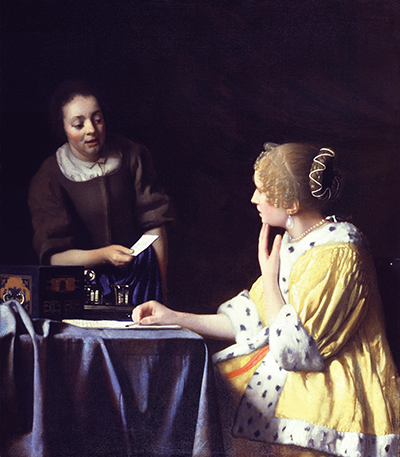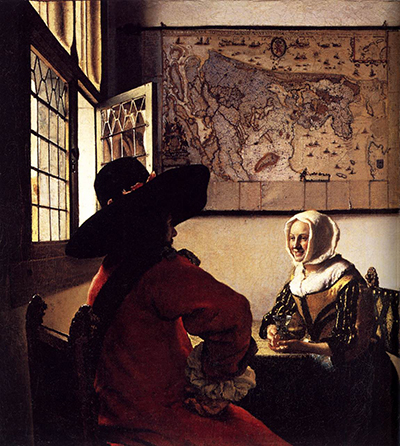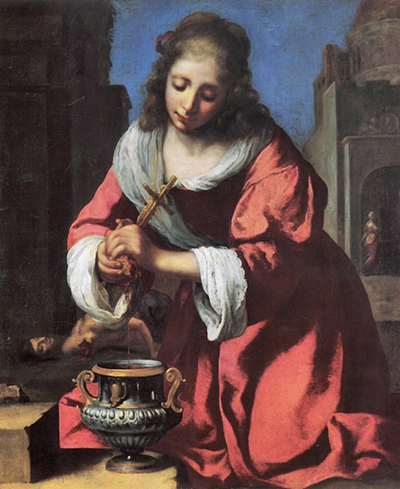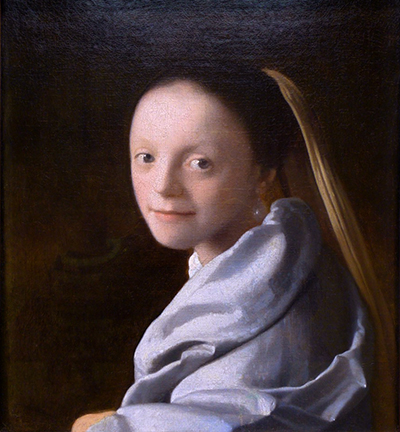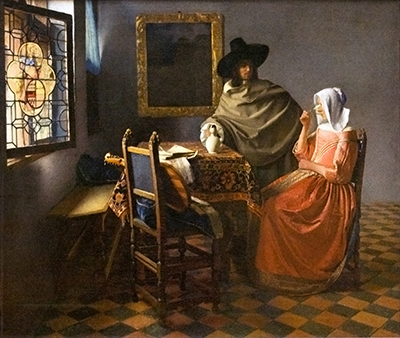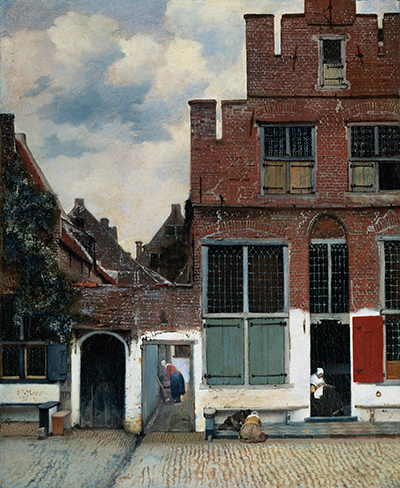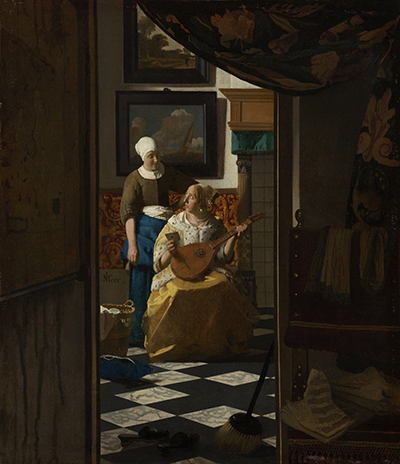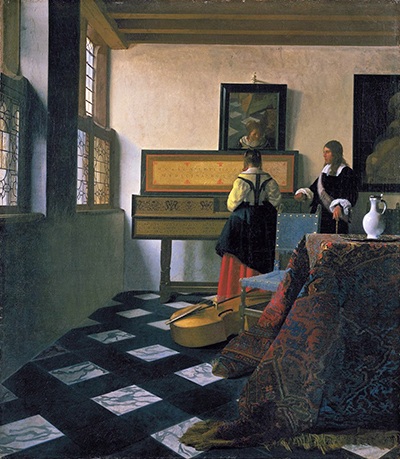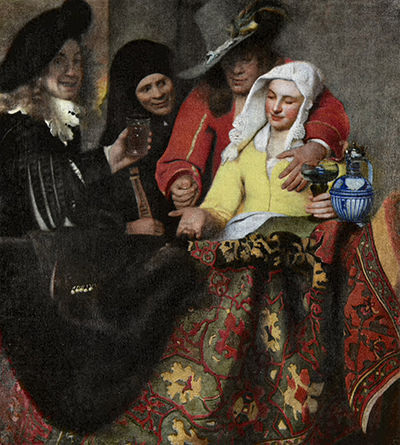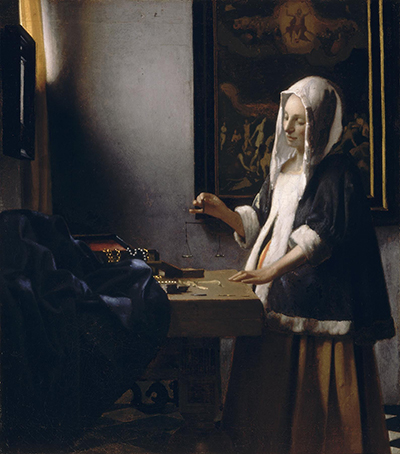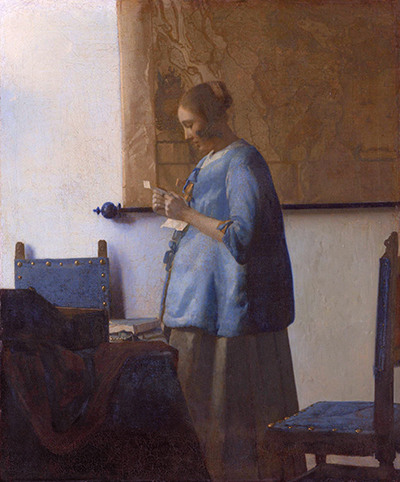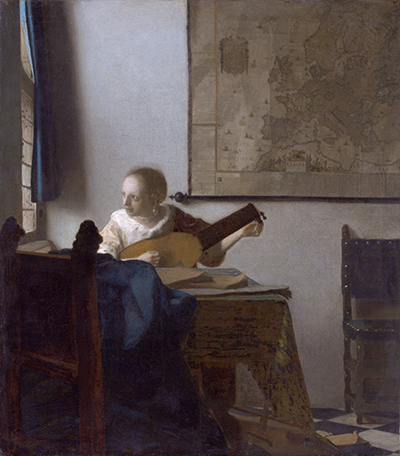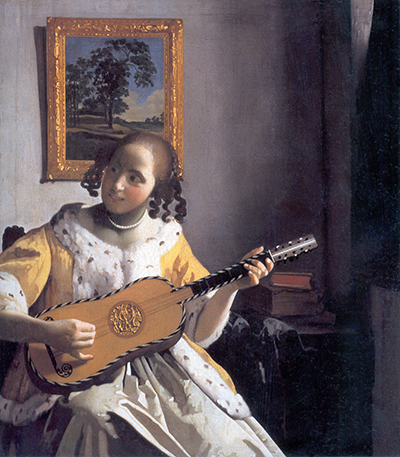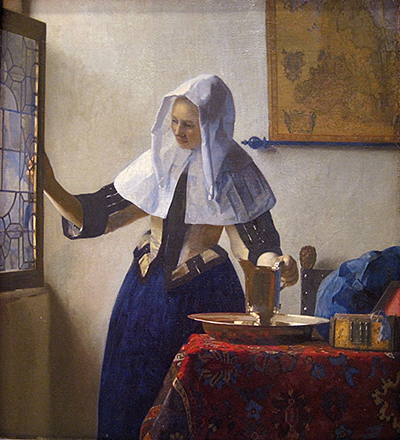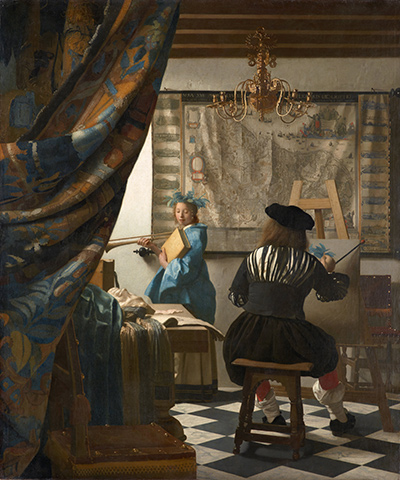Johannes Vermeer was a Dutch artist who produced an exceptional portfolio of paintings in the mid-17th century.
He is best known for his true-to-life Baroque portraits of women and girls in domestic settings. Vermeer was productive during the Dutch Golden Age, a significant period in Dutch art history.
One of his most famous paintings is the Girl with a Pearl Earring, 1665. This particular work has received a lot of interest over the centuries and has been the subject of much academic study.
The majority of Vermeer’s portraits are set indoors, apparently in the same house, as many of them show similar interior scenes with the same furniture and decoration. Several of his paintings show the same people, mostly women.
The paintings were created with great care and much attention to detail, often using very expensive paints. Vermeer employed subtle and effective lighting techniques in his paintings for which he was highly accredited.
Vermeer is the only 17th-century artist to use the expensive pigment lapis lazuli, or natural ultramarine so extensively and early in his career. He also had an advanced understanding of the way the colour of one surface or object can be affected by the colour of an adjacent surface or object.
The inspiration for this most likely stemmed from his study of the work of Leonardo da Vinci. An example of this effective use of natural ultramarine is evident in The Girl with a Wineglass. In this painting, Vermeer has under-painted the shadows of the red satin dress using natural ultramarine. With the red and vermilion mixture on top of this, he has achieved a fresh and crisp faintly purple tone.
There has been much speculation by art scholars over the years, as to whether Vermeer used mechanical means to achieve the extremely accurate detail apparent in his paintings.
The fact that Vermeer received no formal training, coupled with the lack of evidence of any preparatory sketches for his work, lends credence to this theory. In a book entitled Vermeer’s Camera: Uncovering the Truth Behind the Masterpieces, published in 2001, Professor Philip Steadman claims that Vermeer used a camera obscura as an aid to creating his paintings.
Evidence for his theory includes the fact that six paintings, apparently set in the same room, are exactly the right size to have been painted inside a camera obscura situated within the back wall of the room.
While there is no firm evidence to support the theory that Vermeer used a primitive camera as an aid, the suggestion was first made in 1891 by an American graphic artist named Joseph Pennell. Pennell argued that the ‘photographic perspective’ in the painting Officer and Laughing Girl is geometrically absolutely correct. In this painting, the two figures sit close, either side of a table, and the soldier’s head being closer to the viewpoint is twice the size of the girl’s head; as it would appear in a photograph.
Such photographic accuracy was rare in 17th-century art.
An American inventor and entrepreneur - Tim Jenison suggested that Vermeer may have combined a camera obscura with a comparator mirror, which would make it easier to replicate colour values. Jenison spent several years testing this theory in an attempt to recreate The Music Lesson. This endeavour was showcased in the documentary film Tim’s Vermeer in 2013. Jenison made several observations of this painting which support his theory. Firstly, the highly accurate portrayal of the light falloff along the wall. Next, there are several highlights and outlines in the picture which are consistent with the chromatic aberration produced by primitive lenses of the time. Finally, the scrollwork on the harpsichord in the original painting displays a noticeable curvature which matched that as produced in Jenison’s re-creation. This effect is caused when duplicating the view seen from a concave mirror.
While Johanne Vermeer enjoyed a modest celebratory status during his life in Delft and The Hague, his name slipped into obscurity after his death in 1675. His name was all-but-forgotten in surveys of Dutch art until well into the 19th-century when he was re-discovered by Theophile Thore-Burger and Gustav Freidrich Waagen who published an essay on him. Only 34 paintings are widely attributed to Vermeer today, but in spite of that his reputation has grown, and he is accredited as being one of the great masters of the Dutch Golden Age.
Vermeer paintings are major items from the Dutch Golden Age which represents the finest period in Dutch art history. Vermeer himself was a skilled artist who is best remembered for his portraits of women as seen in his Girl with a Pearl Earring oil painting.
This particular work has brought about a huge amount of exposure and study over several centuries and you can see it below alongside a collection of 25 of his finest paintings.
Johannes Vermeer came from Delft in the Netherlands, as it is now, and created a series of exceptional paintings in the mid-17th century though his life was ended prematurely at the age of 43 at a time when he was really starting to reach his peak as an artist.
It is likely that future years could have brought new styles and techniques into his career but what we were left with is a consistent approach to Baroque portraits with around 34 in total attributed to Vermeer.
Vermeer paintings certainly underline his influences which predominantly came from Carel Fabritius, Leonaert Bramer and Dirck van Baburen. Many believe that Vermeer actually received training from Carel Fabritius, who was a pupil of Rembrandt, but this has never been proven.
The Dutch Golden Age is well known for having these clear links between it's significant members and these teachings helped to keep the movement going for several generations.
The style of the Dutch Golden Age has made it's paintings very popular with art fans from within the modern era and Vermeer is one of it's spearheads thanks to paintings such as Girl with a Pearl Earring.
Typically, these style of paintings are best suited to framed giclee art prints which offer the most accurate reproduction of the detail and colour found within the artist's original paintings though many posters and stretched canvas reproductions are also sold frequently.
Milkmaid
Milkmaid is another well known painting from Vermeer and represents a role in Dutch society which always held importance. Milkmaids would often be simple women who would do necessary jobs for the up keep of families though who would also sometimes be alluring to husbands who would sometimes try to take advantage of their position as an employer.
Vermeer as seen in Milkmaid and the like was always interested in depicting the lives of common people and found inspiration in their lives where as traditionally artists had always been more attracted to covering the rich and famous instead. Similar examples to Vermeer have been Vincent van Gogh as seen in his Potato Eaters masterpiece which covered the real darkness in the lives of Dutch peasants many years later.
View of Delft
View of Delft features the city of Vermeer's life and the great love he had for his native city is shown in the large number of landscape scenes which he created of it.
Vermeer was relatively unambitious in terms of travel and was happy to spend most of his life in Delft where he could concentrate on his art in beautiful surroundings. Several rivers pass through this region which allows for many different scenes across the town.
Many artists from centuries ago became temporaily forgotten about until being rediscovered later on and Vermeer is certainly one of these.
Without an overstated personality his name had been lost from the classification as a major Dutch artist of this time until Gustav Friedrich Waagen and Théophile Thoré-Bürger produced discussion of his career in the 19th century which regained exposure to his career which has continued to rise up to the present day.
Astronomer
Astronomer above is a typical scene for Vermeer who would normally like to capture people within their own homes whilst at work, although astronomy is some what different to the jobs his subjects would normally be doing.
All of the paintings included within this website cover the vast majority of Vermeer's career but there is a full list of paintings attributed to Vermeer further down this page. Each of the images displayed here links through to where you can buy your own high quality reproduction copy of it to add to your own home or office, for those who appreciate his artistic talents.
Girl with a Pearl Earring
Girl with a Pearl Earring has been given several names over the years since Vermeer painted it in 1665. It's other names that have since been used include Girl In A Turban, Head Of Girl In A Turban and The Young Girl With Turban.
Nowadays turbans are seen as predominantly for religious use and the painting is consistently called Girl with a Pearl Earring, which has also become the title for a movie which covers the life of the woman portrayed in the work.
List of Famous Vermeer Paintings
Please see below for a summarised list of the best Vermeer paintings that are featured throughout this website.
- Christ in the House of Martha and Mary
- Diana and Her Companions
- The Procuress
- Girl Reading a Letter at an Open Window
- A Girl Asleep
- A Maid Asleep
- The Little Street
- Officer with a Laughing Girl
- Officer and Laughing Girl
- The Milkmaid
- The Wine Glass
- A Lady Drinking and a Gentleman
- The Glass of Wine
- The Girl with the Wineglass
- View of Delft
- Girl Interrupted at her Music
- Woman in Blue Reading a Letter
- The Music Lesson
- Woman with a Lute
- Woman with a Pearl Necklace
- Woman with a Water Jug
- Young Woman with a Water Pitcher
- A Woman Holding a Balance
- A Lady Writing a Letter
- Girl with a Pearl Earring
- Girl In A Turban
- Head Of Girl In A Turban
- The Young Girl With Turban
- The Concert
- Portrait of a Young Woman
- Study of a Young Woman
- The Allegory of Painting
- The Art of Painting
- Mistress and Maid
- Girl with a Red Hat
- The Astronomer
- The Geographer
- The Lacemaker
- The Love Letter
- Lady Writing a Letter with her Maid
- The Allegory of Faith
- The Guitar Player
- Lady Standing at a Virginal
- Young Woman Standing at a Virginal
- Lady Seated at a Virginal
- Saint Praxedis
- Girl with a Flute
- A Young Woman Seated at the Virginals



